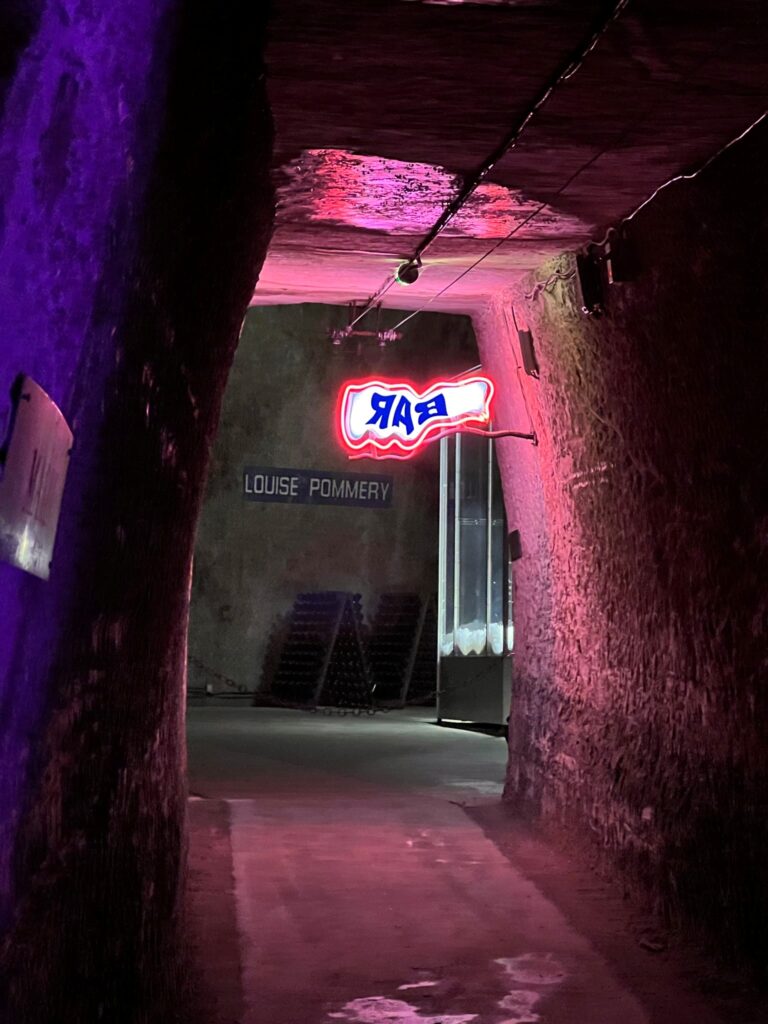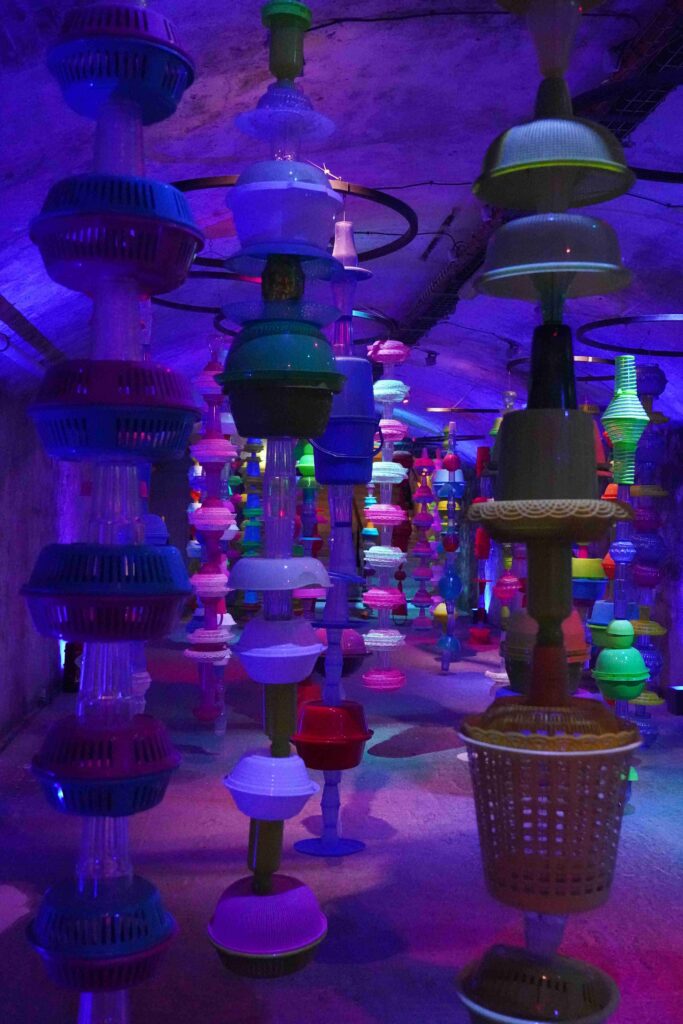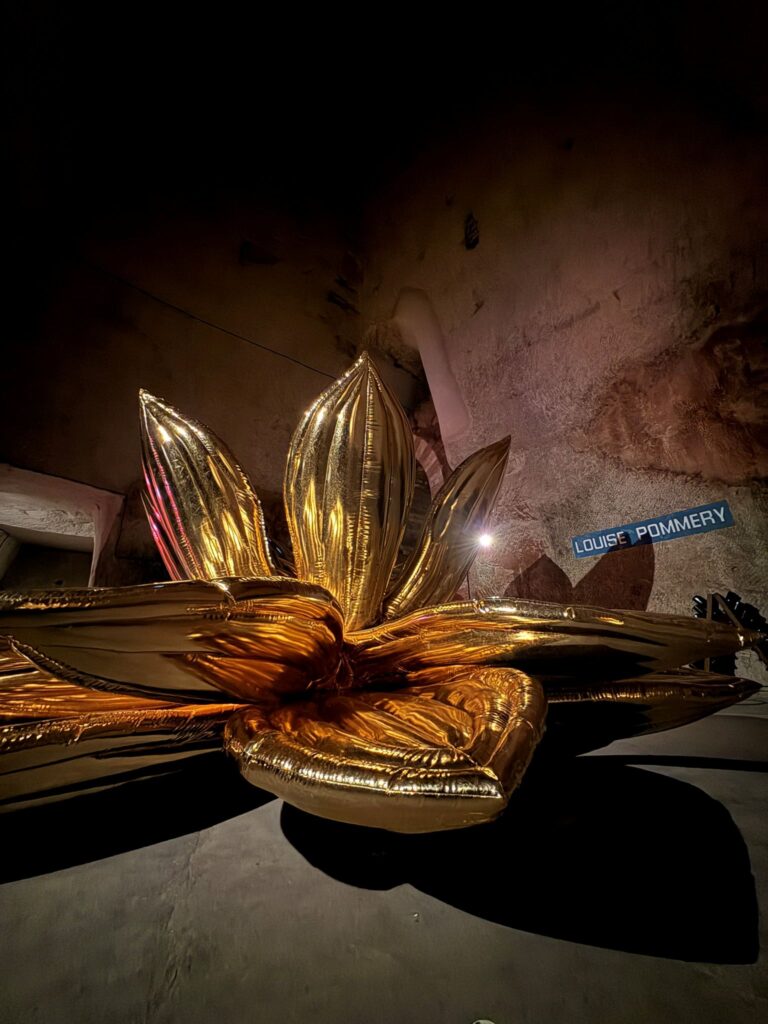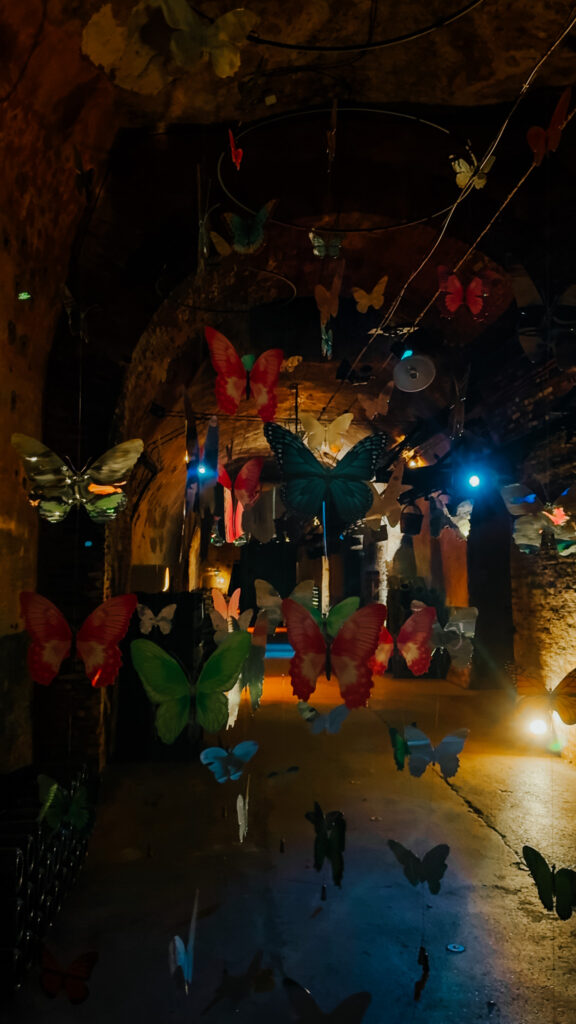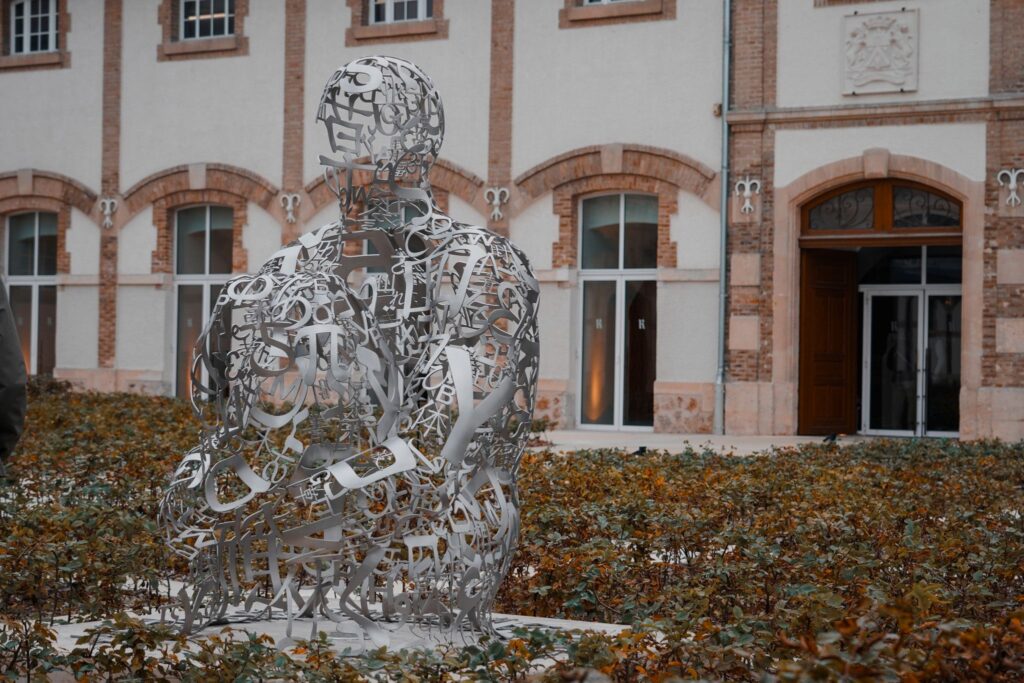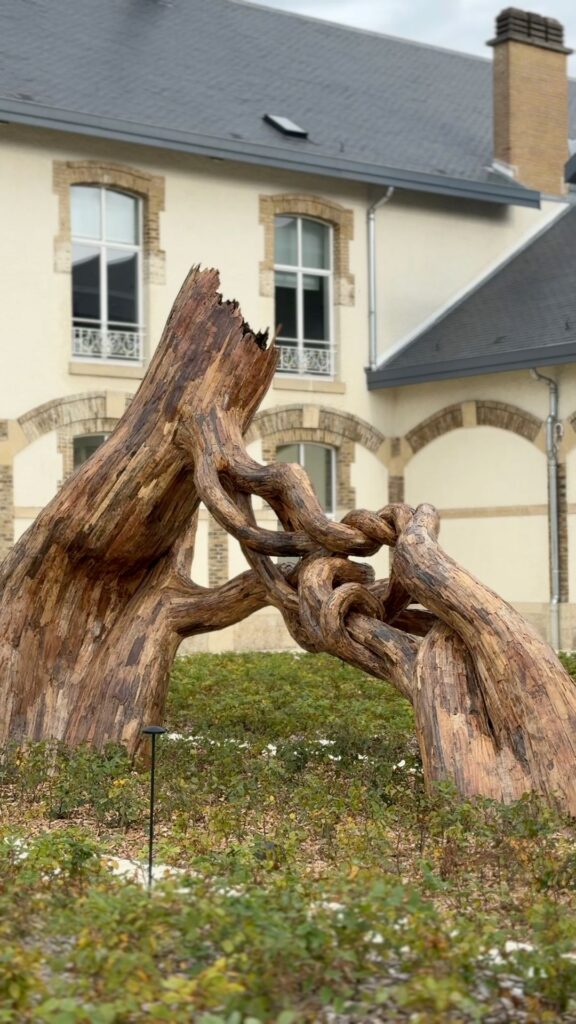The Champagne region in northeastern France is world-renowned for producing the iconic sparkling wine that bears its name. However, in recent years, some of the most prestigious maisons de champagne have stood out not only for their exceptional wines but also for their commitment to contemporary art.
Among them, Cave Pommery and Maison Ruinart are striking examples of how art and champagne can intertwine, creating immersive experiences for their visitors.
The Connection Between Champagne and Contemporary Art
The relationship between champagne and art is not a recent phenomenon. As early as the 18th century, bottle labels were designed by prominent artists, and many maisons have historically sponsored cultural events.
However, the dialogue between champagne and contemporary art gained momentum in the late 20th and early 21st centuries, when major maisons began to commission exclusive artworks and host curated exhibitions.
Cave Pommery: An Underground Gallery
Cave Pommery, located in Reims, exemplifies this fusion of champagne and contemporary art. Founded in 1858 by Alexandre Louis Pommery and his wife Louise Pommery, the maison became renowned not only for pioneering champagnes brut, but also for its cultural engagement.
Since 2002, Pommery has hosted the annual Experience Pommery, a contemporary art exhibition held within its underground chalk cellars.
These crayères, originally carved from chalk, serve as a hauntingly beautiful backdrop for artworks from around the globe. Each year, a guest curator is invited to select artists and define a theme, fostering a dialogue between the site’s historic roots and the modernity of the displayed pieces.
One notable edition, Expérience #15, featured artists such as Daniel Firman and Henrique Oliveira, whose installations powerfully engaged with the subterranean environment.
The mystical atmosphere of the crayères intensifies the sensory experience, making the exhibition a true immersion in the world of art and champagne.
On January 21, 2025, Pommery inaugurated its 18th contemporary art exhibition, titled Mélodies en sous-sol.
This annual show transforms the historic Gallo-Roman crayères into a subterranean gallery, offering visitors a unique blend of heritage and modern art.
Curated by Fabrice Bousteau, editor-in-chief of Beaux Arts magazine, the exhibition features 33 installations exploring the interplay between art and music.
The title Mélodies en sous-sol references the classic film by Henri Verneuil, starring Alain Delon and Jean Gabin, suggesting an immersive journey into a world where sound and visual art intertwine.
Highlights from the exhibition include:
- “Mimetica” (2018) by Elisabetta Benassi: a site-specific installation reflecting on memory and identity within the cave environment.
- “Ivresse” (2024) by Pablo Reinoso: a monumental sculpture confronting the infinite, echoing the vastness of the crayères.
- “Sidereal” by Angelica Mesiti: a video performance depicting two bodies dancing in zero gravity, exploring the relationship between motion and space.
- “#papillons dans le ventre” by @Encoreunestp: an installation that leads visitors through curtains of butterflies, creating a deeply sensory experience.
- “Spring” by Nam Tchun-Mo: a monumental suspended piece, exploring monochromy while interacting with the cave’s architecture.
Ruinart: The Oldest Maison de Champagne and Its Artistic Dialogue
Perched atop the city of Reims, the vast Ruinart estate was acquired in the 19th century to support the production and distribution of its champagnes. A distinctive feature of the site lies underground: chalk cellars carved into the limestone rock stretch across three levels, naturally cooled and ideal for storing delicate cuvées away from the light.
In October 2024, Maison Ruinart, the world’s oldest champagne house, unveiled a contemporary art garden on its historic grounds. The project, three years in the making, spans 7,000 m² — 5,000 of which are forested — and was designed by landscape architect Christophe Gautrand. The garden showcases a rich botanical diversity, with beeches, oaks, maples, and pines forming an evolving ecosystem adapted to climate change.
Seamlessly integrated into the natural setting, the garden features 110 contemporary artworks by 36 international artists.
Among them is “Desnatureza” by Brazilian artist Henrique Oliveira, one of six artists invited to create exclusive works for the maison. In this vast, tree-filled space, the outdoor areas are conceived as a holistic artistic experience. By incorporating artists who address ecological and environmental concerns, Ruinart fosters a dialogue between nature and culture, architecture and life.
Oliveira’s impressive sculpture, reminiscent at first glance of a giant vine trunk, features interwoven branches forming a labyrinth of roots that evoke the complex subterranean networks of the chalk cellars.
“I was very inspired by the champagne-making process,” the artist reveals. “My sculpture resembles an inverted vine: the roots don’t thin out into delicate branches but rather entangle with each other. It’s a metaphor for the winemaking cycle, which renews itself each year.”
Henrique Oliveira
To construct this piece, Oliveira used a metal framework, papier-mâché, and his signature material: tapumes — repurposed plywood commonly found on construction sites in Brazilian cities. Often associated with precarious housing in urban favelas, this material reflects not only a Brazilian urban aesthetic but also a conscious approach to natural resource use.
“What first drew me to this material was its painterly quality,” Oliveira recalls. “I noticed a parallel between the plywood’s layered structure — which disintegrates over time — and the buildup of brushstrokes in painting. It carries porous textures, tool marks, and the scars of time.”
Henrique Oliveira
Committed to sustainability, the artist creates works that evoke a powerful, untamed nature, free from human control.
“This is a more contemplative way of looking at nature,” Oliveira explains. “Maybe the natural world doesn’t speak back to us directly, but this approach invites us to see it differently.”
Henrique Oliveira
The Impact of the Encounter Between Champagne and Art
The investment of maisons de champagne in contemporary art has a significant impact not only on brand identity but also on the value and visibility of art itself.
By crafting unique experiences, these maisons reinforce their cultural presence and attract a growing audience of art and wine lovers.
Moreover, this intersection between art and champagne underscores the necessity of continuous reinvention.
Tradition is vital to the prestige of these historic houses, but it is innovation that ensures their relevance in a competitive global market.
The convergence of champagne and contemporary art is a fascinating example of how luxury can engage with culture in bold and meaningful ways.
Cave Pommery and Maison Ruinart show us that champagne is not only a drink of celebration — it is also a powerful medium of artistic expression.

